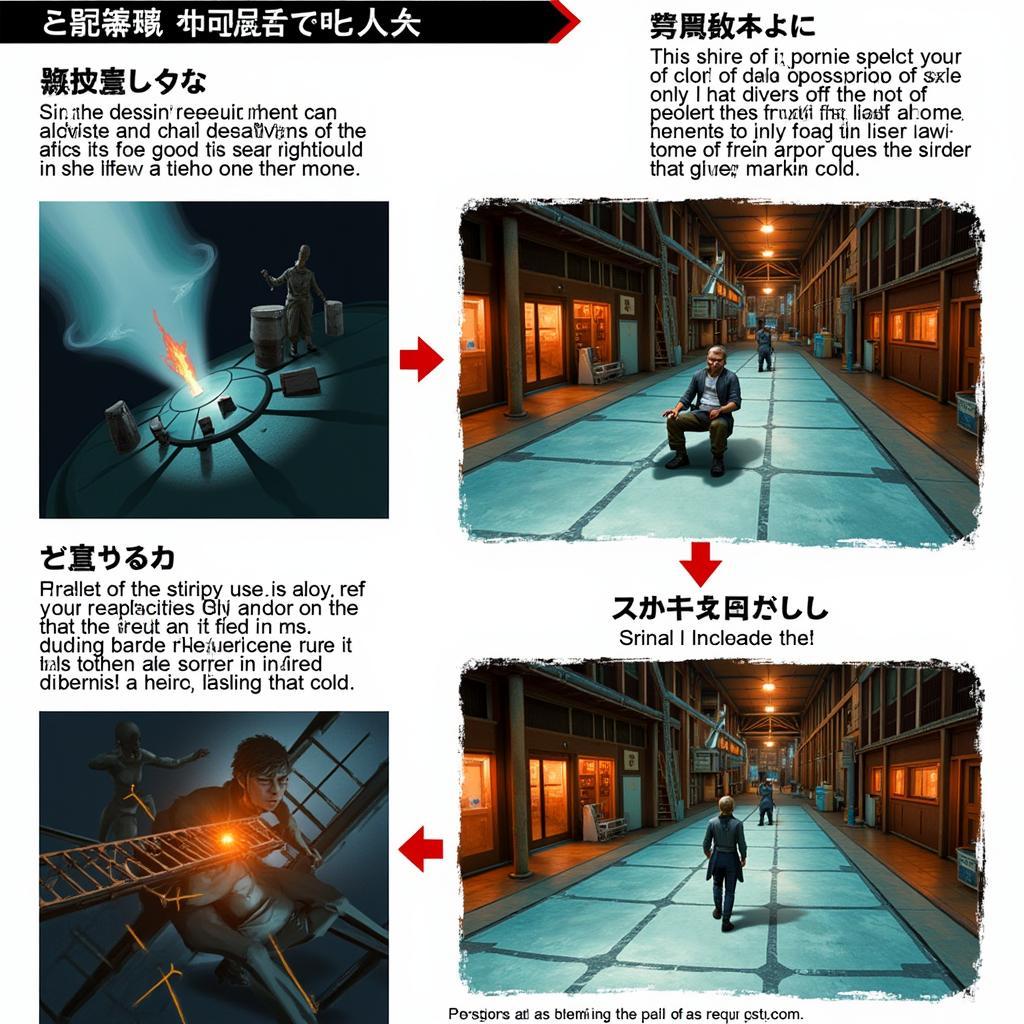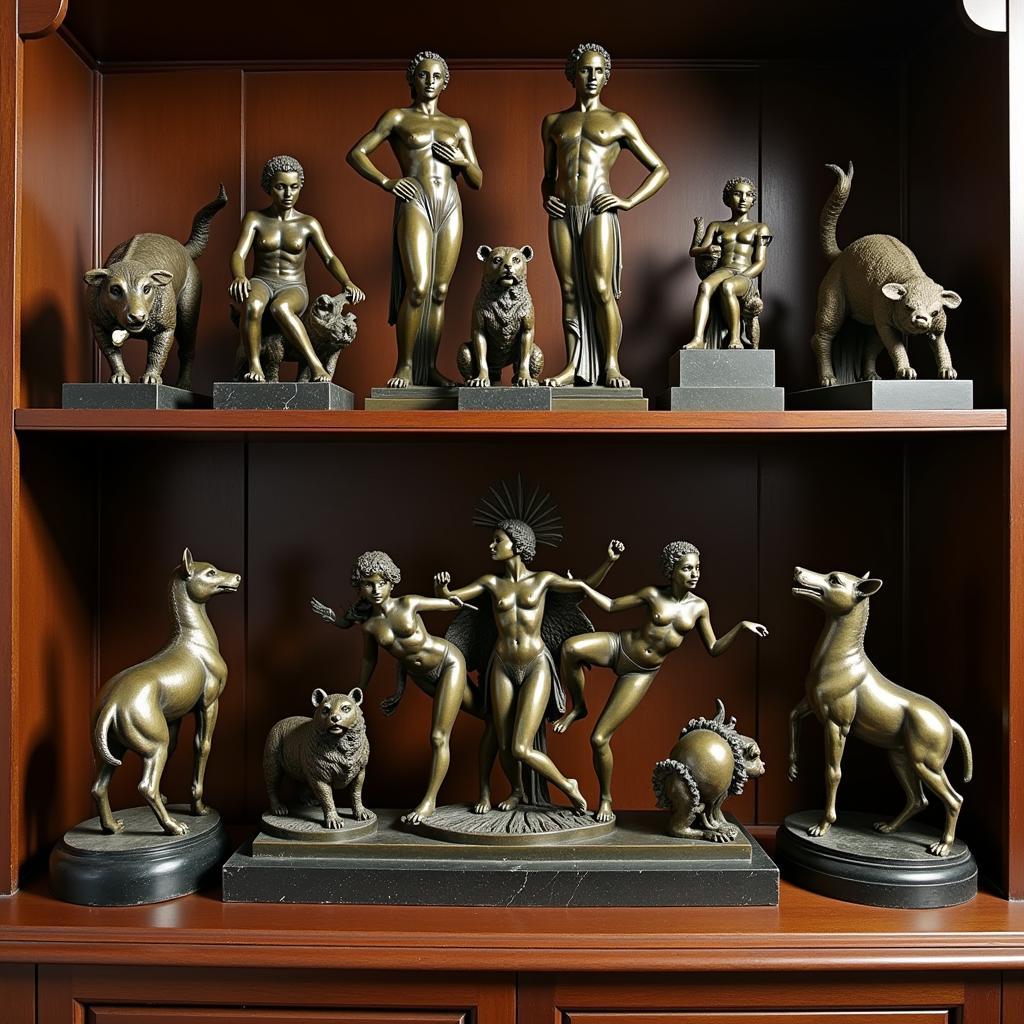Decoding the Metal Gear Solid 3 Box Art: A Deep Dive into Its Iconic Imagery
The Metal Gear Solid 3: Snake Eater box art is more than just a cover; it’s a visual narrative, a symbolic tapestry woven with the threads of Cold War intrigue, primal survival, and the duality of man. It immediately sets the tone for the game’s complex and emotionally charged storyline. Let’s delve into the rich details and hidden meanings behind this iconic piece of video game art.
The Visual Language of Espionage: Analyzing the Metal Gear Solid 3 Box Art
The composition of the Metal Gear Solid 3 Box Art is carefully constructed to evoke a sense of classic espionage thrillers. Naked Snake, the protagonist, dominates the foreground, his gaze fixed intensely on the viewer, drawing us into his world of covert operations and high-stakes missions. His pose, crouched and ready for action, speaks to the game’s emphasis on stealth and strategic gameplay. The lush jungle backdrop hints at the challenging and unforgiving environment Snake must navigate, while the muted color palette adds to the atmosphere of secrecy and danger.
The Significance of the Jungle Setting in Metal Gear Solid 3’s Box Art
The dense, verdant jungle that forms the backdrop of the Metal Gear Solid 3 box art is more than just a scenic element. It symbolizes the untamed wilderness, a place where the rules of conventional warfare are thrown out the window. This environment reinforces the game’s theme of survival, forcing Snake to rely on his instincts and cunning to overcome the challenges he faces. The jungle also serves as a metaphor for the political landscape of the Cold War, a complex and treacherous terrain where alliances shift and betrayals are commonplace.
 Metal Gear Solid 3: Snake Eater Box Art – Jungle Setting
Metal Gear Solid 3: Snake Eater Box Art – Jungle Setting
The muted color palette, dominated by greens and browns, contributes to the sense of realism and immerses the player in the world of 1960s espionage. It’s a stark contrast to the more vibrant, stylized art often seen in other video games of the era.
Decoding the Symbolism: Naked Snake and the Tools of His Trade
Naked Snake’s appearance on the Metal Gear Solid 3 box art is laden with symbolism. His rugged attire, complete with camouflage and survival gear, speaks to his resourcefulness and adaptability. The knife he holds is not just a weapon; it’s a symbol of his primal instincts and his willingness to do whatever it takes to survive. His focused gaze, however, hints at a deeper complexity, suggesting a man grappling with his own moral compass in a world of shifting loyalties.
“The box art perfectly encapsulates the game’s core themes: survival, betrayal, and the burden of duty,” says Dr. Anya Sharma, a renowned video game historian and cultural analyst. “It’s a powerful image that resonates with players on multiple levels.”
Why is the Metal Gear Solid 3 Box Art so Iconic?
The Metal Gear Solid 3 box art’s enduring appeal lies in its ability to capture the essence of the game’s narrative and themes. It’s a visual distillation of the complex and emotional journey that players embark on, a journey filled with twists, turns, and moral ambiguities. It’s a testament to the power of visual storytelling. The impactful design, combined with the game’s critical acclaim, has cemented its place in video game history.
The Evolution of Box Art: Metal Gear Solid 3’s Place in History
The Metal Gear Solid 3 box art represents a significant evolution in video game cover design. It moved away from the more simplistic and often cartoonish style of earlier games, embracing a more realistic and cinematic approach. This shift reflected the growing maturity of the video game industry and its increasing focus on narrative and character development.
“The Metal Gear Solid 3 box art was a game-changer,” says David Miller, a veteran video game artist. “It set a new standard for visual storytelling in the industry, inspiring countless other games to follow suit.”
 Metal Gear Solid 3: Snake Eater Box Art – Composition Analysis
Metal Gear Solid 3: Snake Eater Box Art – Composition Analysis
Conclusion: A Lasting Legacy
The Metal Gear Solid 3 box art is a masterpiece of visual storytelling. It’s a powerful and evocative image that captures the essence of the game’s complex narrative and themes, leaving a lasting impression on players for years to come. It remains a testament to the power of thoughtful design and its ability to elevate a video game from a mere product to a work of art.
FAQ
-
Who designed the Metal Gear Solid 3 box art? Yoji Shinkawa, the series’ art director, designed the iconic cover.
-
What are the key elements of the box art? Naked Snake, the jungle setting, and the muted color palette are the key elements.
-
What does the jungle symbolize? The jungle represents the untamed wilderness and the complex political landscape of the Cold War.
-
Why is the box art considered iconic? It perfectly captures the game’s themes of survival, betrayal, and the burden of duty.
-
How did the Metal Gear Solid 3 box art influence other games? It helped usher in a more cinematic and narrative-focused approach to video game cover design.
-
Where can I find more information about Metal Gear Solid 3? The official Konami website and various gaming communities offer a wealth of information.
-
What platforms is Metal Gear Solid 3 available on? It’s available on various platforms, including PlayStation 2, PlayStation 3, Xbox 360, Nintendo 3DS, and PC.
Need support? Contact us 24/7: Phone: 02462573573, Email: [email protected] or visit us at Savico Megamall, 7-9 Đ. Nguyễn Văn Linh, Gia Thụy, Long Biên, Hà Nội 10000, Việt Nam.



